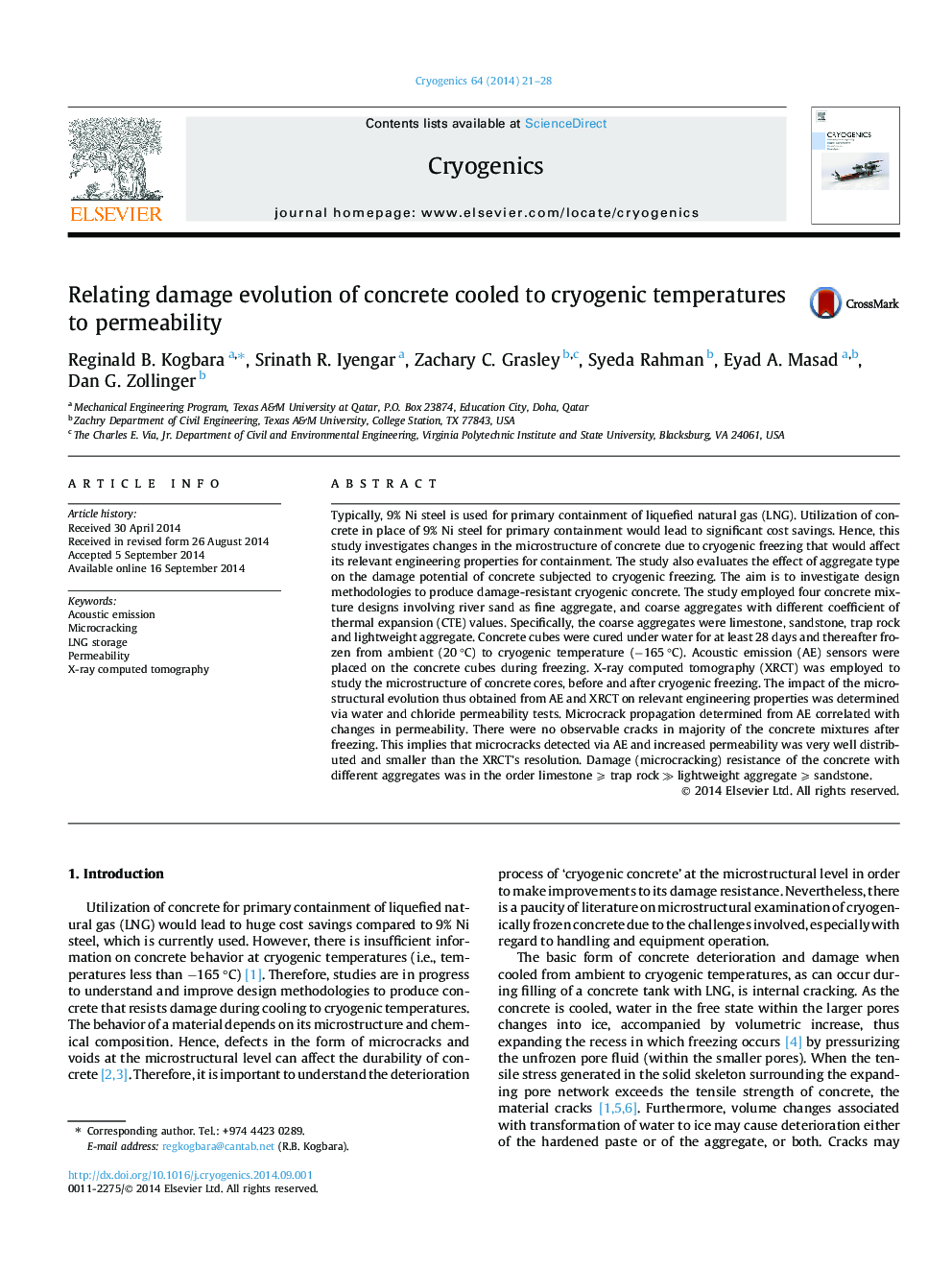| کد مقاله | کد نشریه | سال انتشار | مقاله انگلیسی | نسخه تمام متن |
|---|---|---|---|---|
| 1507334 | 1511048 | 2014 | 8 صفحه PDF | دانلود رایگان |
• The damage resistance of concrete mixtures at cryogenic temperatures was evaluated.
• Acoustic emission (AE), permeability and X-ray computing tomography were employed.
• Damage detected consisted of well distributed microcracks rather than macrocracks.
• Microcrack propagation determined from AE correlated with changes in permeability.
• Limestone and trap rock better resistant than lightweight and sandstone mixtures.
Typically, 9% Ni steel is used for primary containment of liquefied natural gas (LNG). Utilization of concrete in place of 9% Ni steel for primary containment would lead to significant cost savings. Hence, this study investigates changes in the microstructure of concrete due to cryogenic freezing that would affect its relevant engineering properties for containment. The study also evaluates the effect of aggregate type on the damage potential of concrete subjected to cryogenic freezing. The aim is to investigate design methodologies to produce damage-resistant cryogenic concrete. The study employed four concrete mixture designs involving river sand as fine aggregate, and coarse aggregates with different coefficient of thermal expansion (CTE) values. Specifically, the coarse aggregates were limestone, sandstone, trap rock and lightweight aggregate. Concrete cubes were cured under water for at least 28 days and thereafter frozen from ambient (20 °C) to cryogenic temperature (−165 °C). Acoustic emission (AE) sensors were placed on the concrete cubes during freezing. X-ray computed tomography (XRCT) was employed to study the microstructure of concrete cores, before and after cryogenic freezing. The impact of the microstructural evolution thus obtained from AE and XRCT on relevant engineering properties was determined via water and chloride permeability tests. Microcrack propagation determined from AE correlated with changes in permeability. There were no observable cracks in majority of the concrete mixtures after freezing. This implies that microcracks detected via AE and increased permeability was very well distributed and smaller than the XRCT’s resolution. Damage (microcracking) resistance of the concrete with different aggregates was in the order limestone ⩾ trap rock ≫ lightweight aggregate ⩾ sandstone.
Journal: Cryogenics - Volume 64, November–December 2014, Pages 21–28
